This post may contain affiliate links. Please read our disclosure policy.
Homemade Beignets are here just in time for Fat Tuesday (or for whenever the craving hits)! Frying up a batch of fresh beignets and serving them with a generous dusting of powdered sugar is enough to transport anyone to the heart of the French Quarter.
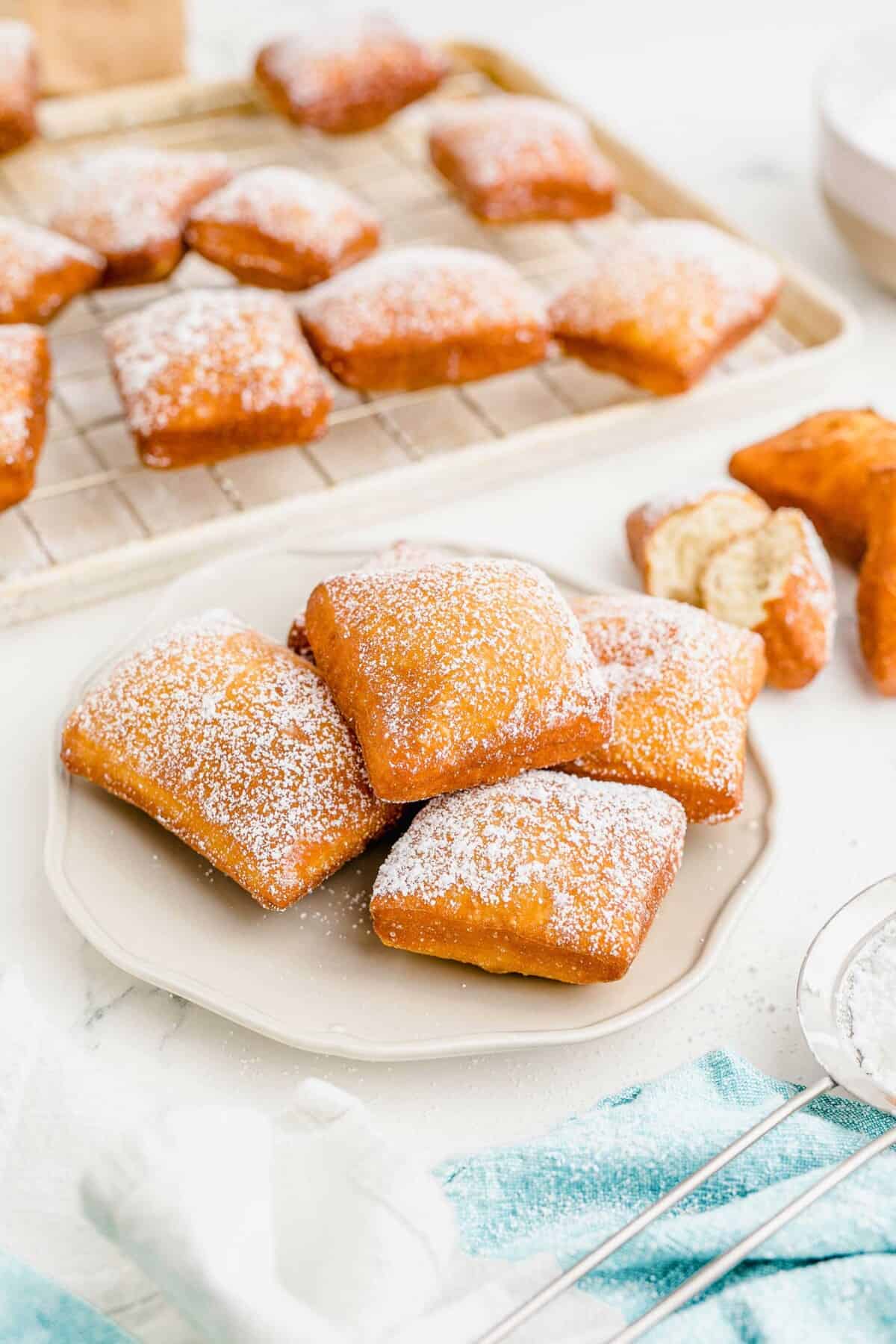
No vacation to NOLA is ever complete without a trip to either Cafe du Monde or Cafe Beignet! But if you’re like me and unable to travel down to Bourbon Street for Mardi Gras, have no fear – you can make the BEST beignets ever in the comfort of your own home. Beads not included!
The key to a perfect beignet is to have a perfectly crunchy outside and a fluffy, soft, and slightly sweet inside. It’s like a donut, but somehow SO much better! Of course, you can’t serve these perfectly fried little pillows of goodness until they’re sprinkled with a hefty amount of sweet powdered sugar. I know traditionally they are smothered in powdered sugar but for photography purposes, I went a little light-handed.
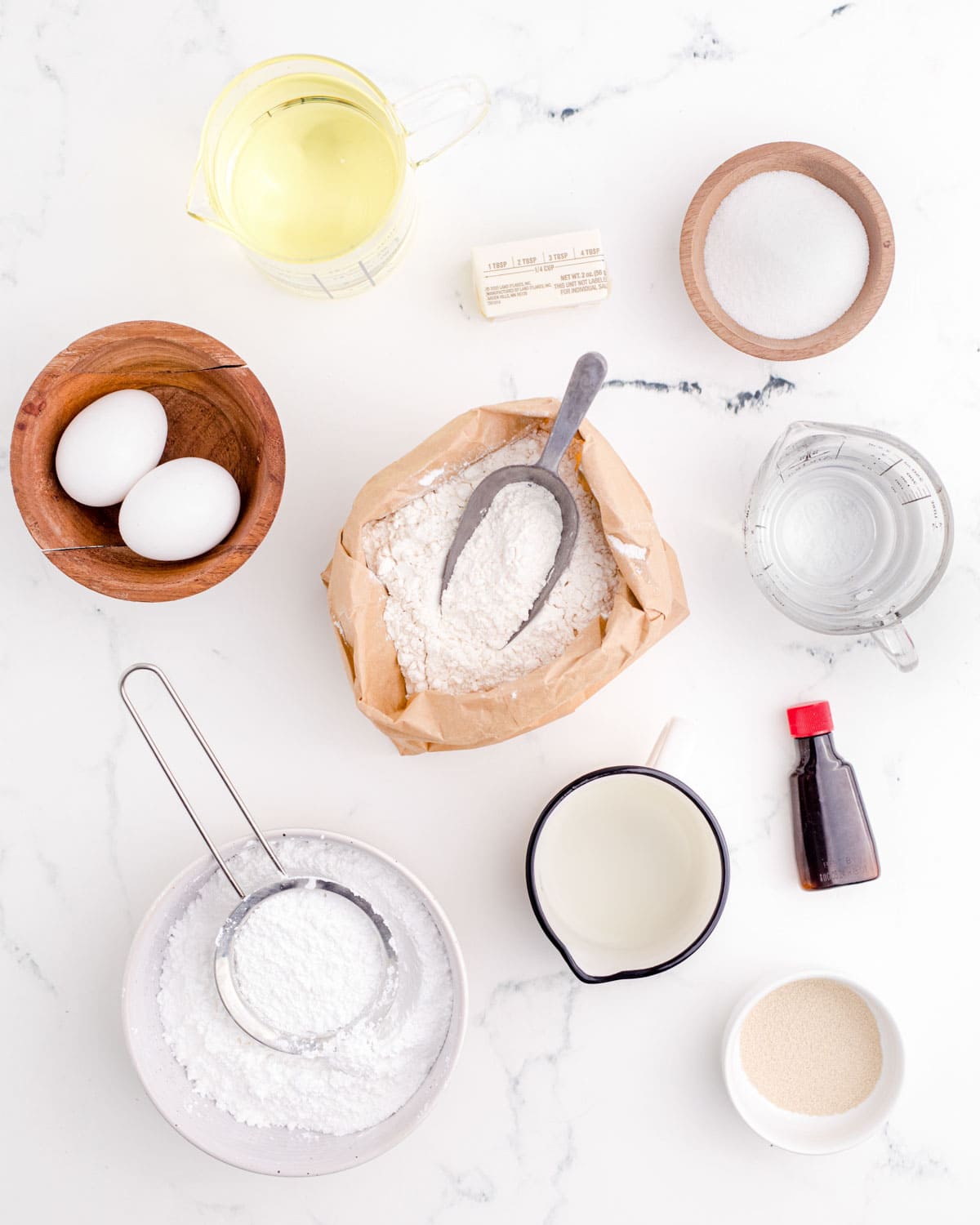
Ingredients for Homemade Beignets
- Water – It should be warm, not hot.
- Active Dry Yeast – This can be found in the baking aisle of your local grocery store.
- Sugar – Just use plain white granulated sugar, nothing fancy!
- Eggs – They’ll need to be room temperature, not cold.
- Whole Milk – Try not to use skim, fat free, or any other type of milk.
- Vanilla – For the best flavor, use pure vanilla extract, not imitation.
- Flour – You’ll need all-purpose flour to give these beignets their structure.
- Butter – Salted and melted!
- Vegetable Oil – This will be used to fry the beignets.
- Confectioners Sugar – Because what beignet is ever ready to eat without it?!
How to Make Homemade Beignets Step by Step
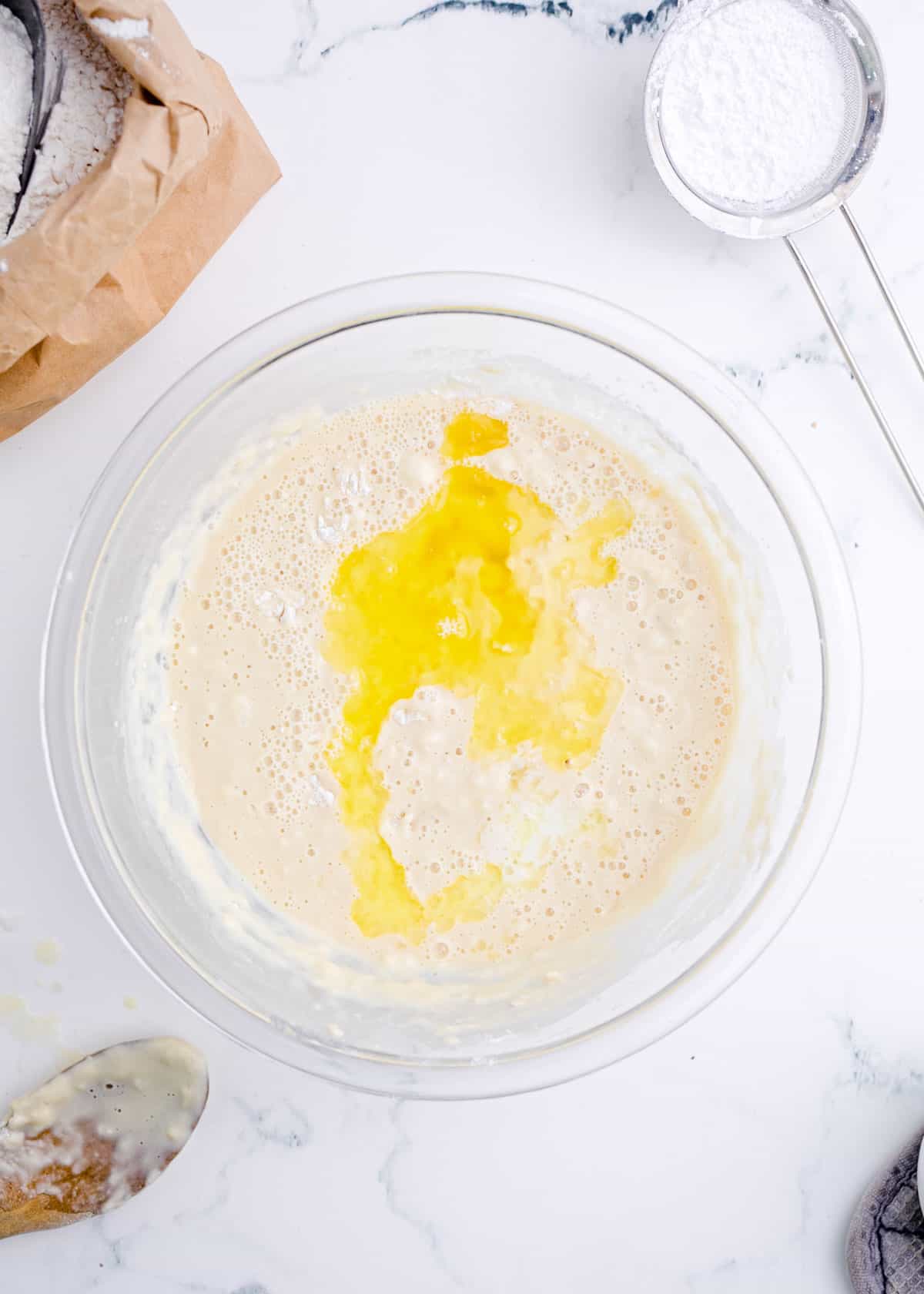
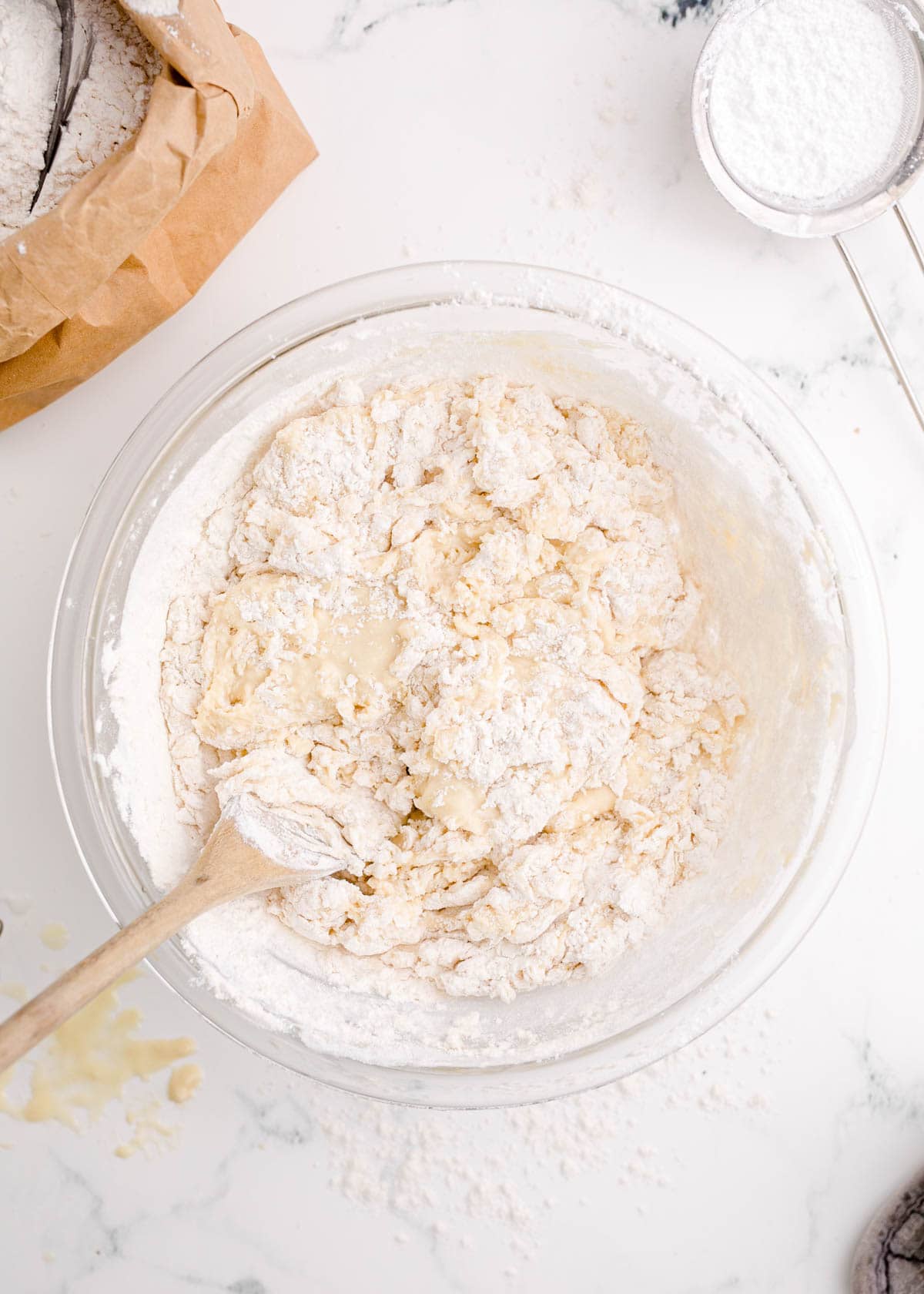
Whisk. Whisk the yeast and sugar into a bowl filled with warm water. Allow it to sit for 5-10 minutes. Then, whisk in the eggs, milk, and vanilla.
Knead. After the flour and butter have been mixed in, knead the mixture until you have a smooth dough.
Rise. Place the dough into a prepared bowl, cover it, then leave it in an undisturbed place at room temperature. Allow it to rise until it’s doubled in size.
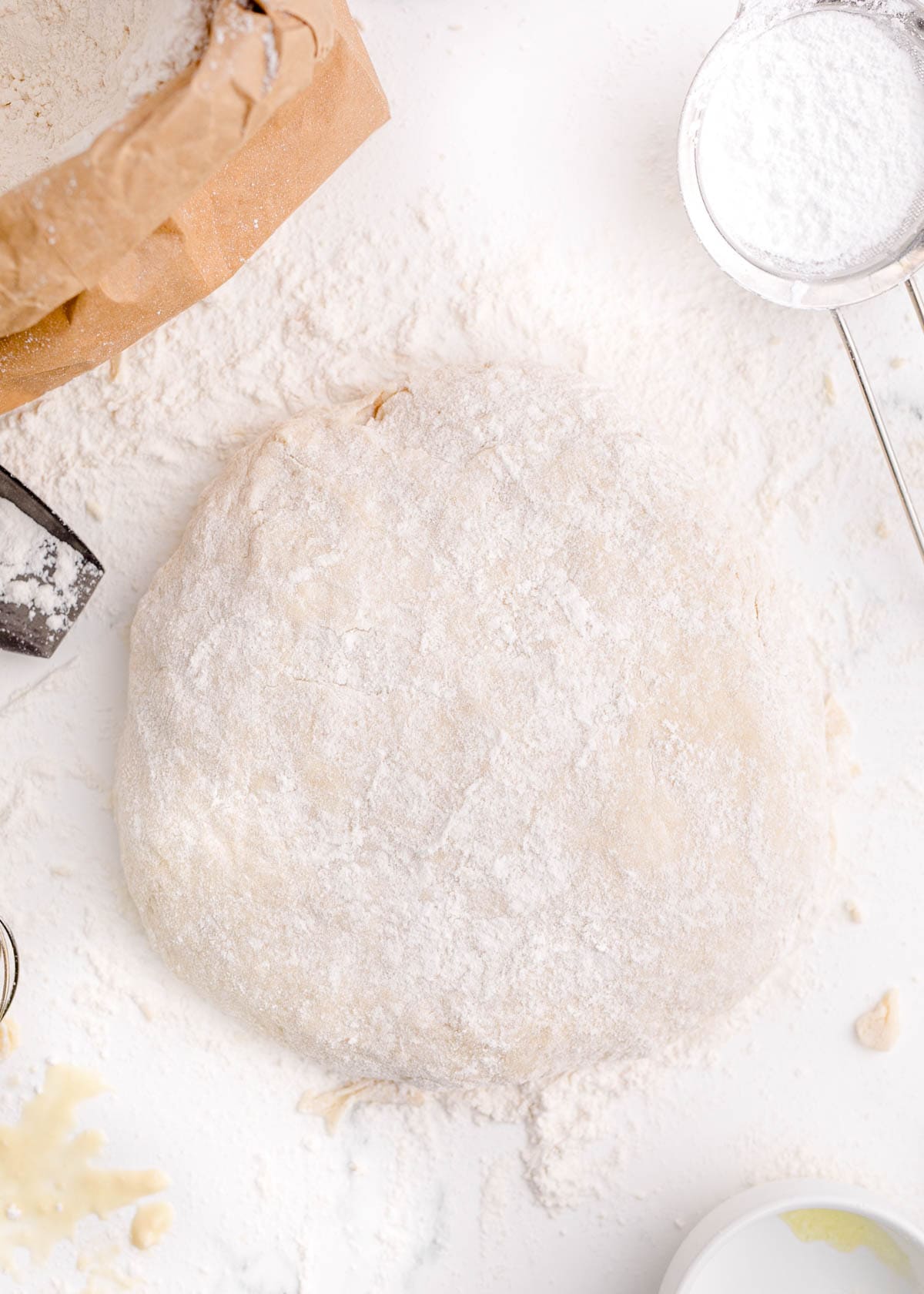
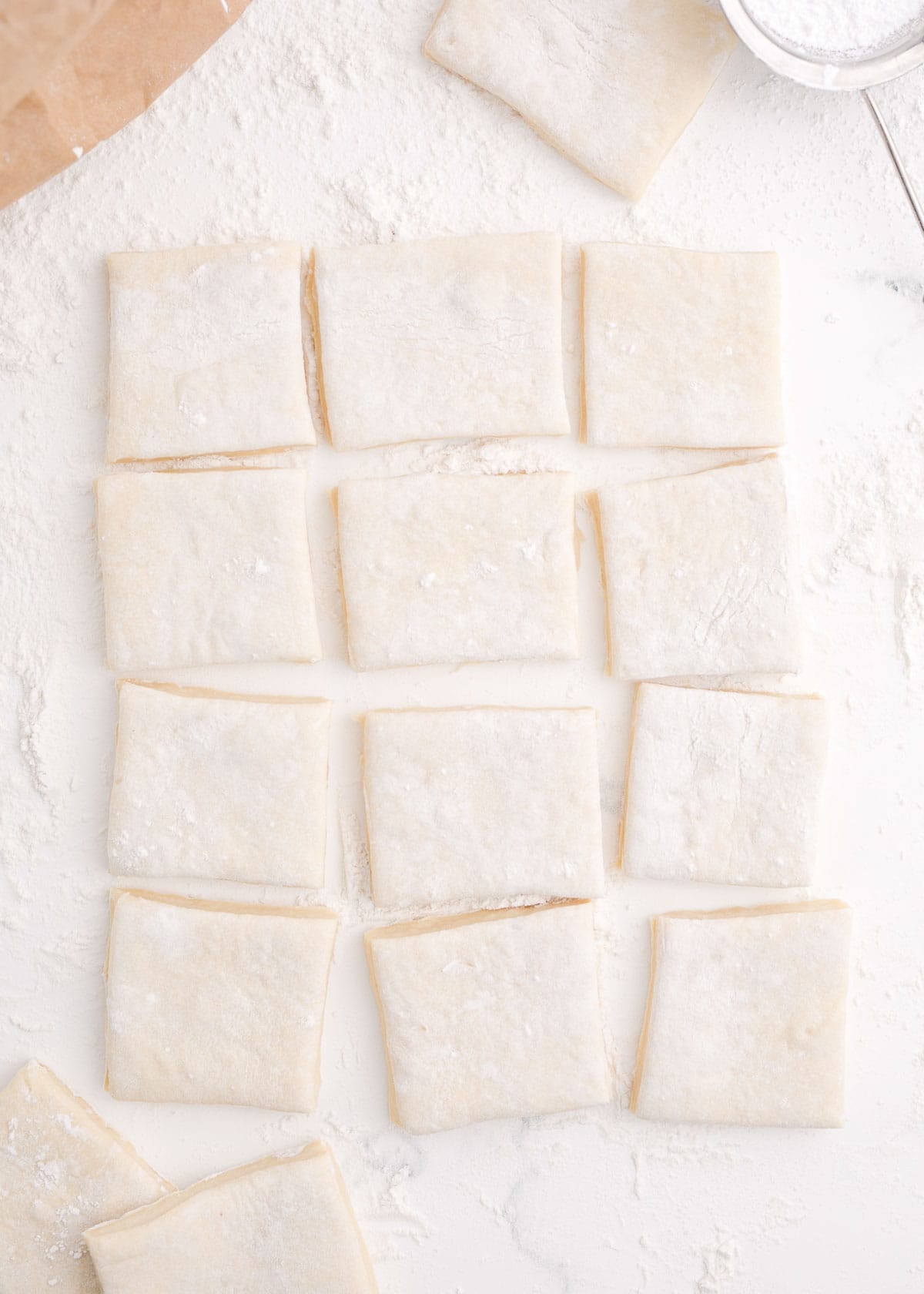
Roll and Cut. Roll out the dough to about 1/4 inch thickness, then chop it into 2 1/2 inch squares.
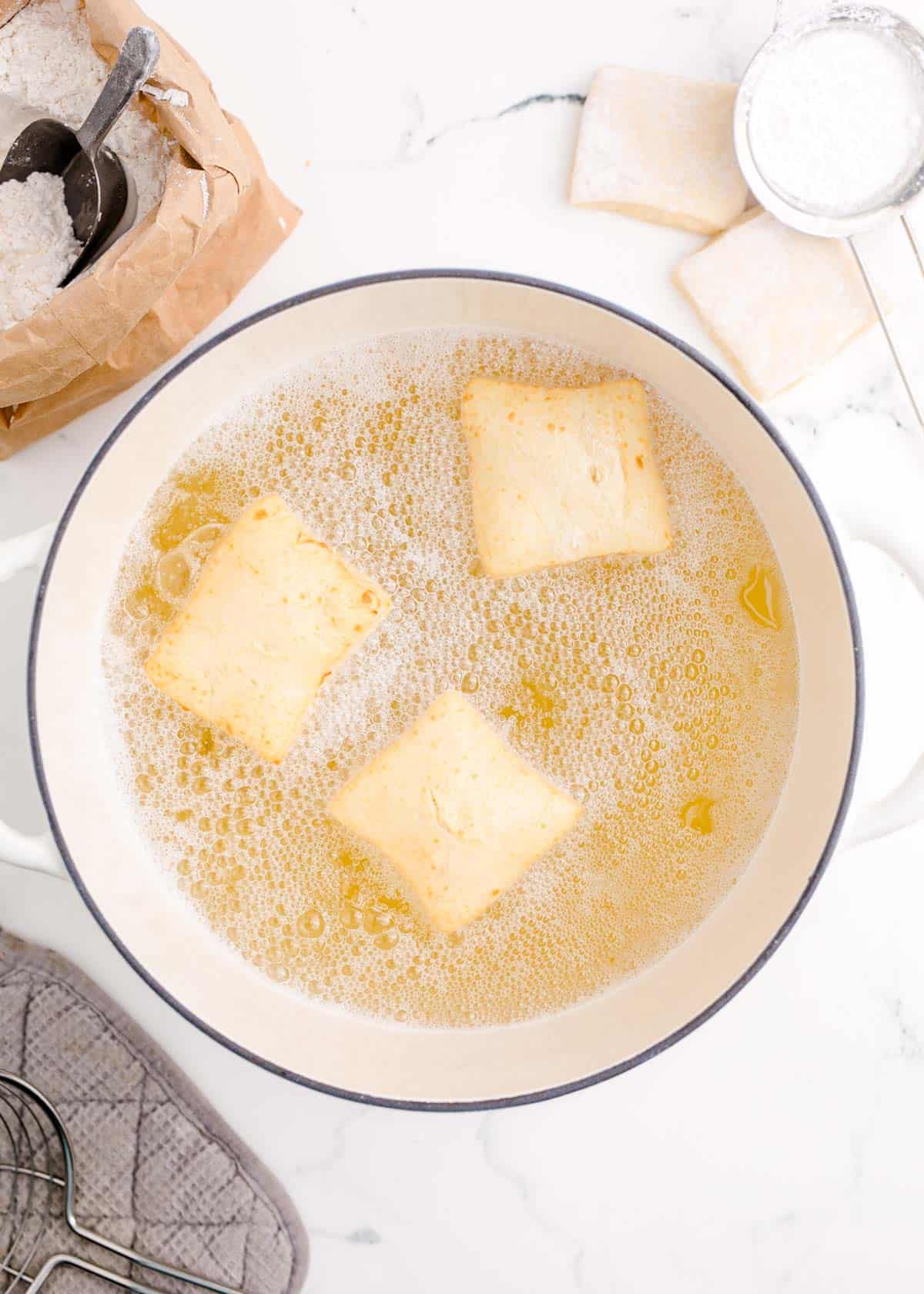
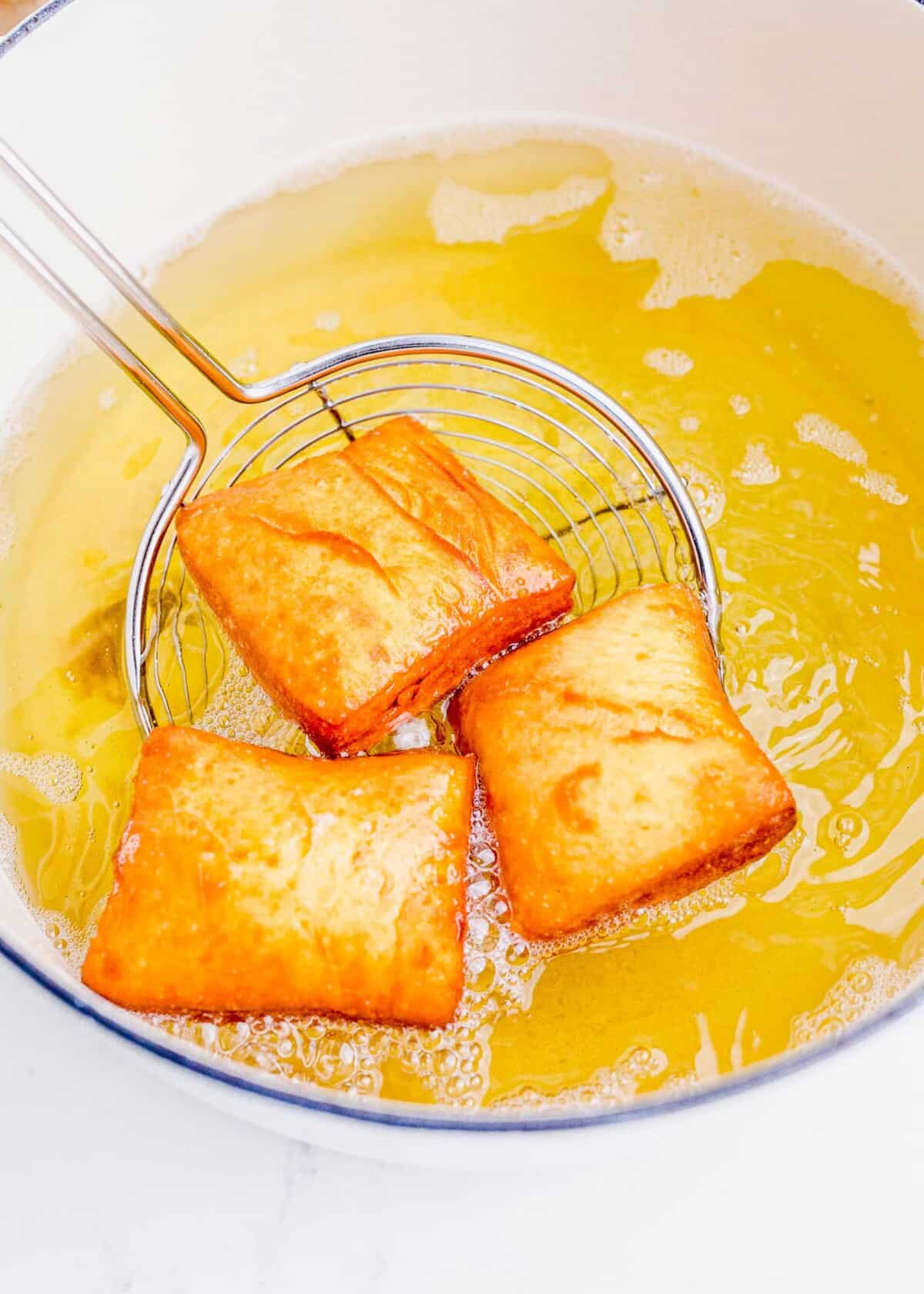
Fry! Once your 2 inches of oil reaches about 370°F, deep fry your beignets! Be sure not to over crowd your pan. Fry them for about 1-2 minutes per side.
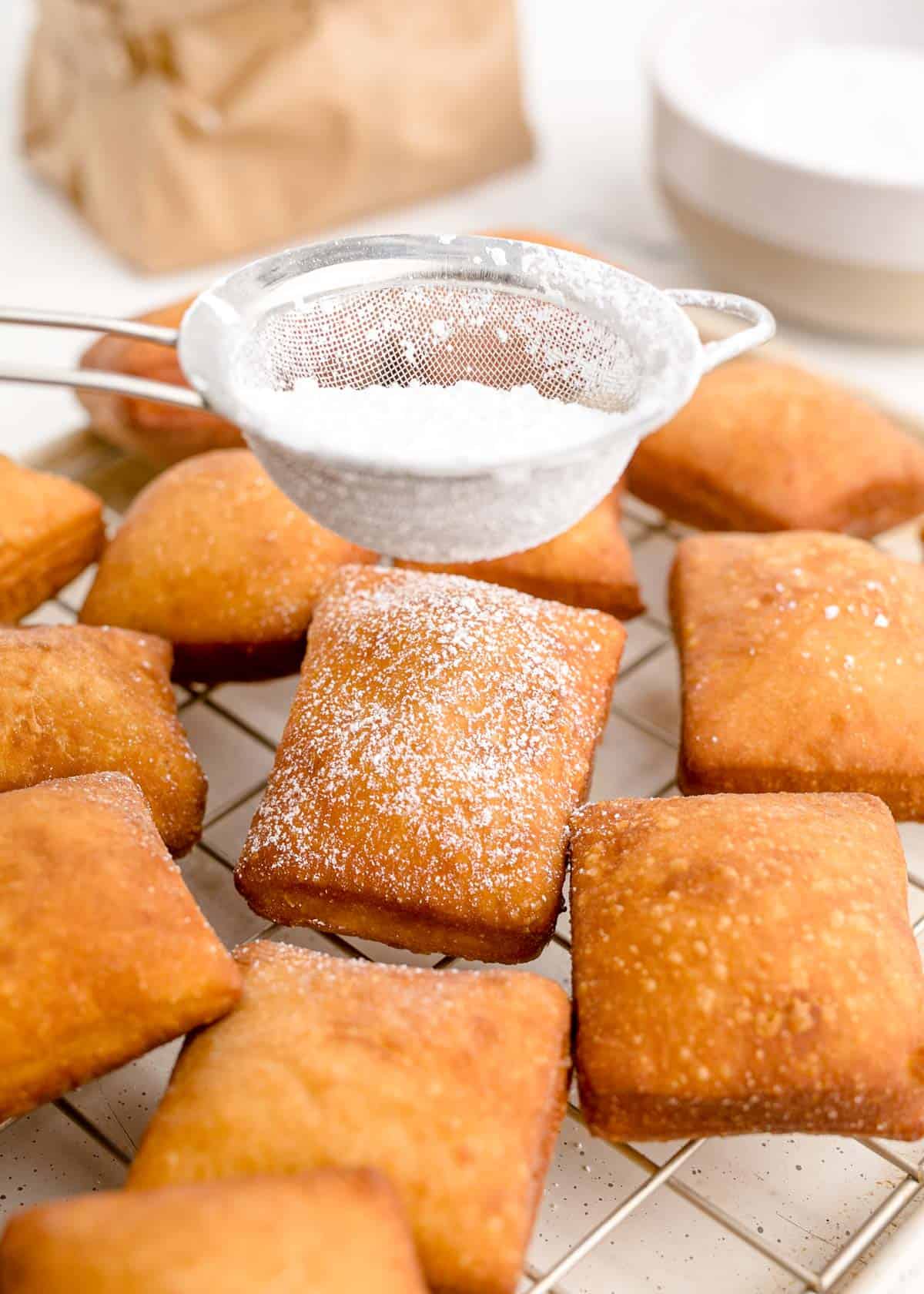
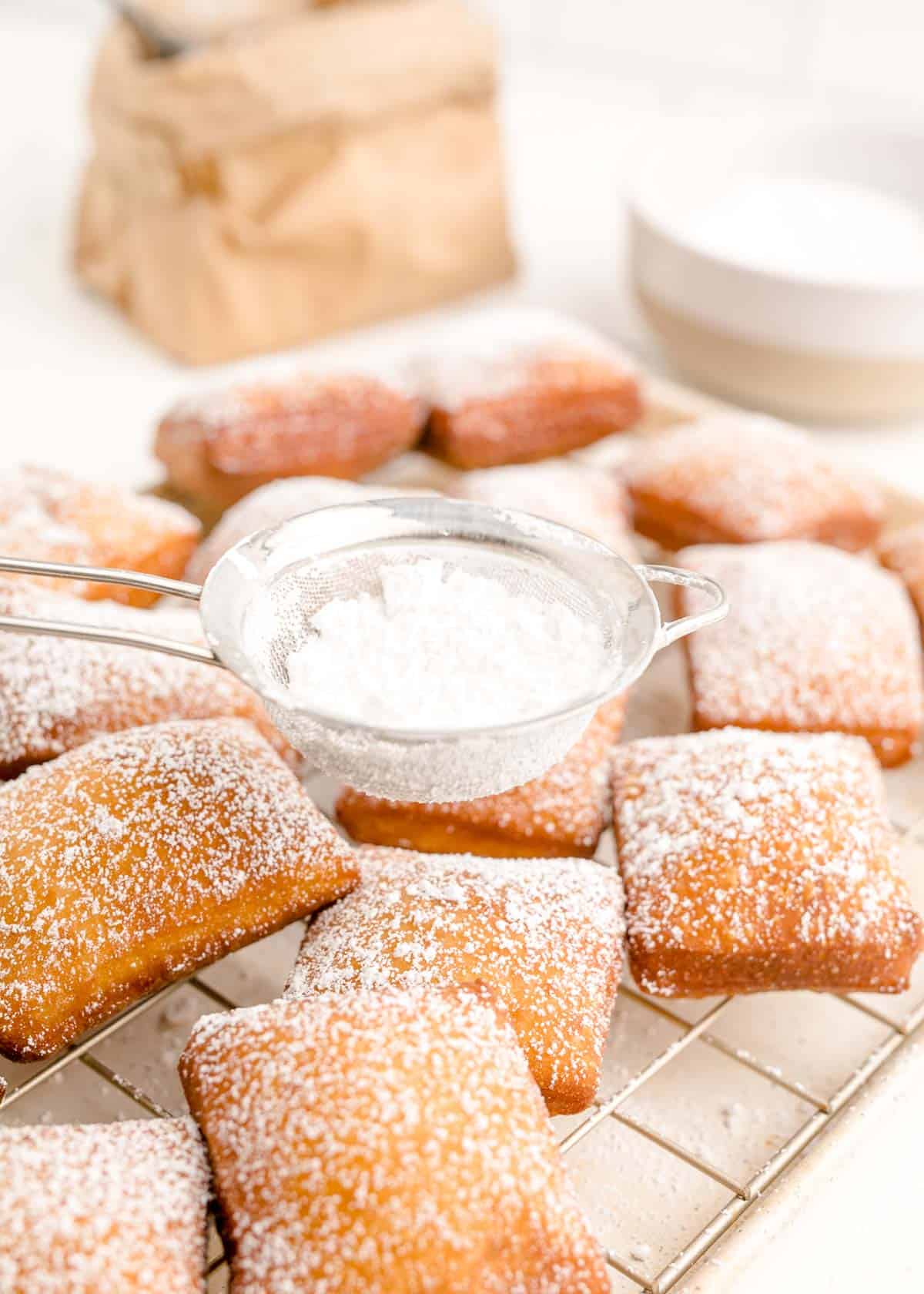
Enjoy! Drain the fried beignets on a plate lined with paper towels or a wire cooling rack, then sprinkle them with an excessive amount of powdered sugar. Serve hot, and enjoy!
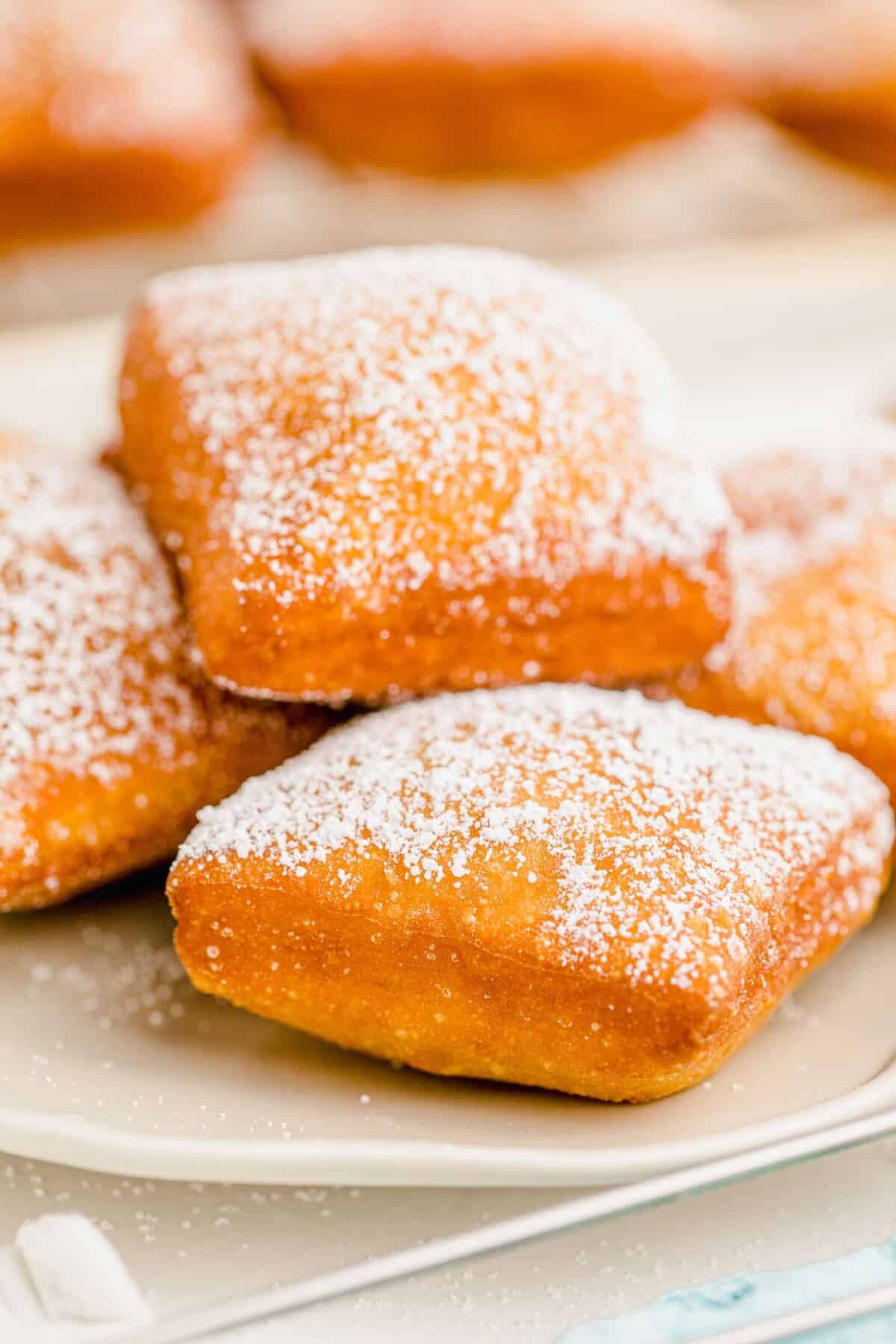
FAQs
First of all, check the expiration date on your yeast. If you notice that the yeast doesn’t froth up when you dissolve it in the warm water with sugar, then your yeast will not work. Also, be sure that the water you are dissolving the yeast in is warm but not too hot.
Yes, use a dough paddle. Mix the dough until the dough comes cleanly away from the sides of the bowl.
Some other choices would be soybean oil, corn oil, sunflower oil, or peanut oil. You must use an oil that is well suited to high heat.
The dough may be made ahead of time. You could put it into the fridge as soon as it is mixed. You don’t need to leave it in a warm place to proof, it will proof in the fridge if you leave it at least overnight. And you may leave it in the fridge for 2 to 3 days. Once you fry the beignets, they are best eaten right away.
The best way to ensure your oil is at the right temperature is to invest in a frying/candy thermometer and clip it on the side of your pot. You have to keep monitoring it to make sure the temperature doesn’t get too high or too low. If it’s too high, your beignets will fry too fast. If it’s too low, your beignets will be soggy and just soak up the oil instead of frying.
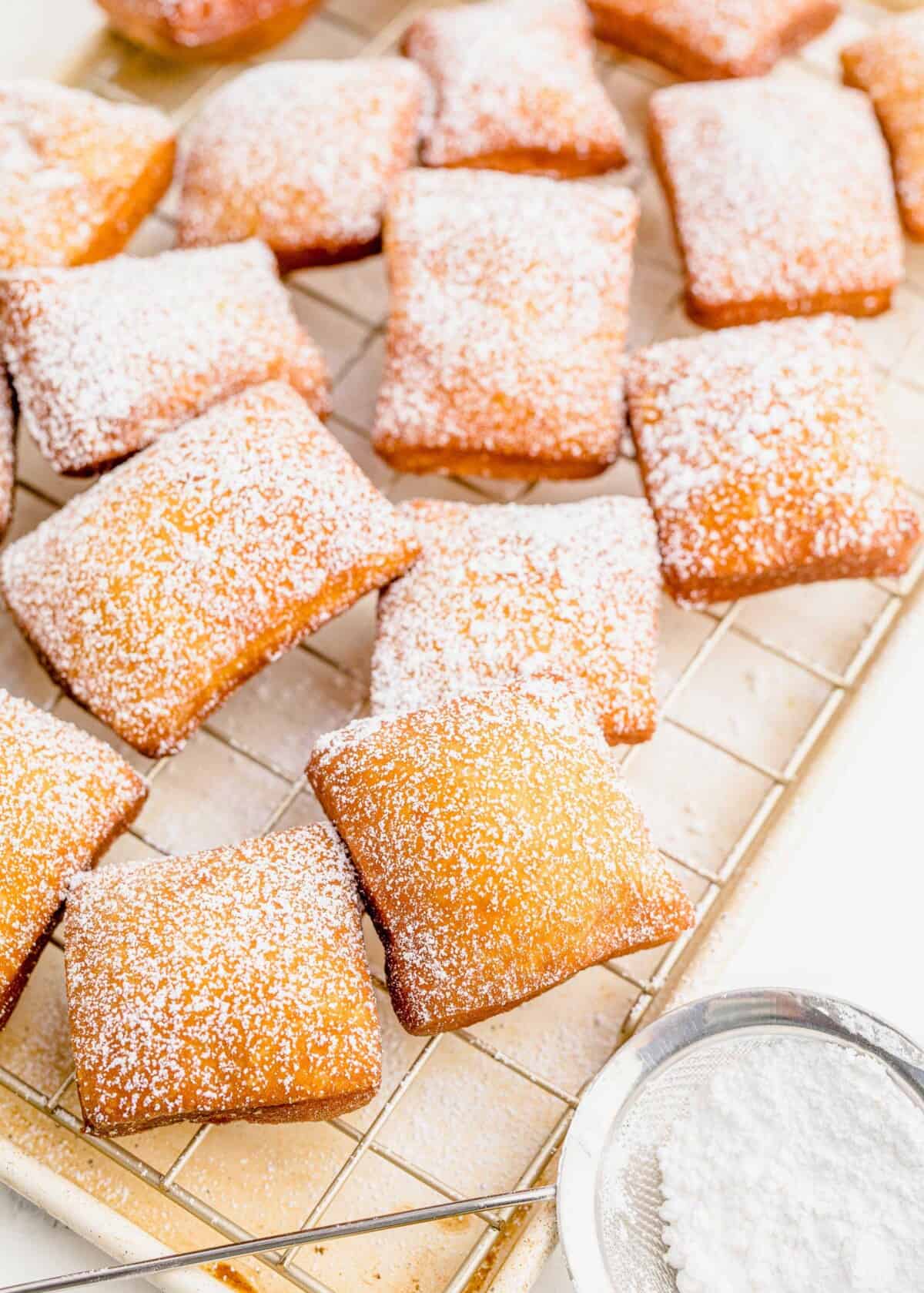
Storage Instructions
The beignets really are best fresh, but will keep in an airtight container at room temperature for 2-3 days. Or you may freeze them for 1-2 months. To reheat, the best is to put them in an air fryer or oven. The microwave will just make them soggy.
Serving Suggestions
Beignets are typically served with a cup of coffee, but you could totally serve these beignets with dipping sauces like Homemade Salted Caramel Sauce or a jam or even drizzle Strawberry Cake Filling on top!
Recipe Ideas for a Mardi Gras Party
- Chicken and Andouille Sausage Gumbo
- One Pot Cajun Shrimp Pasta
- Cajun Brown Butter Scallops
- Cajun Chicken Pasta

Homemade Beignets
Equipment
Ingredients
- ¾ cup (178 ml) warm water, not too hot
- 2 ¼ teaspoons active dry yeast
- ⅓ cup (67 g) granulated sugar
- 2 eggs, at room temperature
- ½ cup (118 ml) whole milk, room temperature
- ½ teaspoon vanilla
- 4 cups (500 g) all-purpose flour, possibly a little more
- 3 Tablespoons (42 g) salted butter, melted
- 4 –8 cups (946 -1893 ml) vegetable oil for frying
- 2 cups (240 g) confectioners sugar
Instructions
- Pour the warm water into a medium size bowl. Whisk in the yeast and sugar and allow it to sit for 5-10 minutes. It should become slightly foamy – or your yeast may be bad.¾ cup (178 ml) warm water, 2 ¼ teaspoons active dry yeast, ⅓ cup (67 g) granulated sugar
- Whisk in eggs, milk, and vanilla.2 eggs, ½ cup (118 ml) whole milk, ½ teaspoon vanilla
- Mix in ½ of the flour, then the melted butter, then the rest of the flour. Knead the mixture with your hands until the dough is smooth. If it is too sticky, you may want to add more flour, a Tablespoon at a time.4 cups (500 g) all-purpose flour, 3 Tablespoons (42 g) salted butter
- Place the dough into a lightly oiled bowl. Cover the dough with plastic wrap or a damp towel and leave it undisturbed in a warm place. Allow the dough to rise until doubled in size (1-2 hours).
- Roll out dough to ¼ inch thick. Cut into 2 ½ inch squares.
- Heat oil in a large pot to 370 °F (188 °C). You should have at least 2 inches of oil for the deep frying.4 –8 cups (946 -1893 ml) vegetable oil for frying
- Deep fry the beignets in batches, don’t crowd. They should pop up when you put them in the oil or the oil is not hot enough. Spoon the oil over the tops of the beignets as the bottoms are frying. Make sure to turn them over so they are golden (not brown) on both sides. It will only take 1-2 minutes per side.
- Drain on a plate lined with paper towels.
- Sprinkle generously with confectioners’ sugar and serve hot.2 cups (240 g) confectioners sugar

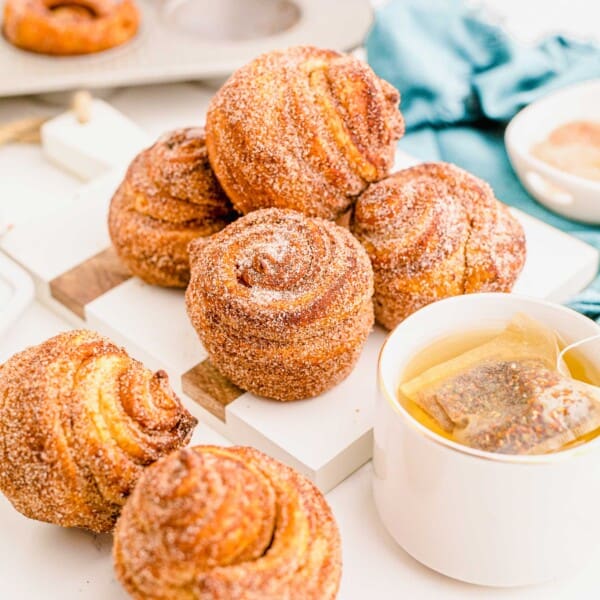


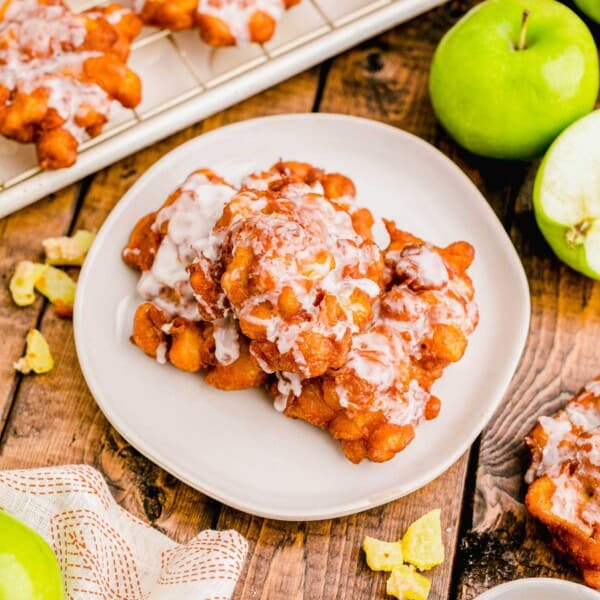







A cost-effective alternative to flying to NOLA! Try ‘em you’ll like ‘em!